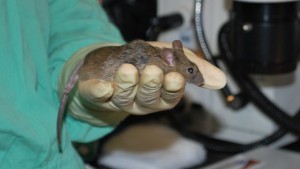The three stories in the half-hour QUEST TV show Pump It Up: Heart Health Special Report investigate the number one cause of death in America, heart disease, which kills 600,000 people each year – more than die from cancer, car accidents or AIDS. We look at the disease from the point of view of a teenager trying to lower her risk; a heart attack patient and the team that saved her life, and a researcher working to one day rebuild a damaged heart from the inside out.

The show opens with the 14-minute story Childhood Obesity: Kids Fight Back. One in six kids in the United States is obese, a condition that doubles their risk of heart disease. Castro Valley teenager Lorena Ramos, 14, has been overweight since she was a small child. Now, with the help of her mother and the Healthy Hearts clinic at Children’s Hospital Oakland, she’s fighting to exercise, eat healthily and drop weight. Will she succeed?

Rushing to Save Heart Attack Patients tells the story of Arlene Skuba, who survived a heart attack at 72, after doctors at the John Muir Medical Center in Concord rapidly unclogged her arteries. Just 30 years ago, doctors could only watch patients as they suffered their heart attacks. As many as 20 percent of them ended up dying. Now, by opening their blocked arteries while their heart attacks are underway, they save all but 5 percent of those who make it to a hospital.

The special report’s final 4-minute story, New Hope for Heart Repair, takes us into the future, to a time when a single injection of three genes might be able to repair damaged hearts and give heart attack survivors their quality of life back. We visit the Gladstone Institutes, in San Francisco, and watch as researchers repair tiny mice hearts using the next generation of cell reprogramming.